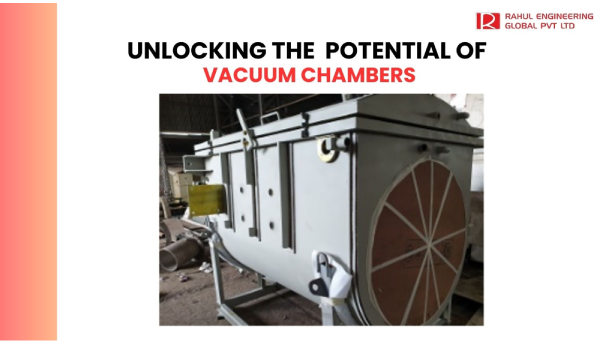
Vacuum chambers might sound like technology reserved for laboratories or specialized industries, but these devices have a wide array of applications across various fields. From scientific research and industrial manufacturing to food preservation and space exploration, vacuum chambers play a crucial role in enabling processes and discoveries. Let's delve into the advantages, features, and workings of these fascinating pieces of equipment.
What are Vacuum Chambers?
Vacuum chambers are sealed enclosures designed to evacuate air and other gases, thereby creating a low-pressure environment or a vacuum inside the chamber. These chambers consist of essential components:
Chamber Body: The primary container where experiments, processes, or materials are placed.
Pump System: A mechanism that removes air and gases to establish a vacuum within the chamber.
Seals and Valves: Ensuring airtight conditions and enabling controlled gas introduction or release if necessary.
Pressure Gauges and Sensors: Instruments to monitor and regulate pressure levels inside the chamber.
Materials: Constructed using materials capable of withstanding vacuum conditions and specific environmental requirements for experiments or processes.
Understanding Vacuum Chambers
How Do They Work?
At its core, a vacuum chamber is a sealed enclosure from which air and other gases are removed, creating a low-pressure environment, commonly referred to as a vacuum. This removal of air is typically achieved through a pump system that draws out the gases, leaving behind a space devoid of atmospheric pressure.
Why Are Vacuum Chambers Important?
The importance of vacuum chambers stems from their versatility and significance in enabling precise experiments, manufacturing processes, and innovations across diverse industries. Their ability to create controlled environments ensures reliability, precision, and quality in various applications.
In essence, vacuum chambers serve as indispensable tools, fostering advancements in science, industry, and technology by enabling controlled environments that drive innovation, experimentation, and progress. Their continued evolution and applications promise to unlock new possibilities and discoveries across numerous fields.
Components and Features
1. Chamber: The main body that houses the experiment, product, or process.
2. Pump System: Utilized to remove air and gases from the chamber.
3. Seals and Valves: Ensure the chamber remains airtight during operation and allows controlled re-introduction of gases if needed.
4. Pressure Gauges and Sensors: Monitor and regulate the pressure inside the chamber.
5. Materials: Chambers are often constructed from materials resistant to corrosion or capable of withstanding extreme temperatures.
How Do Vacuum Chambers Work?
The functioning of a vacuum chamber revolves around the removal of air and gases from the enclosed space. The pump system employed in the chamber extracts air molecules, creating a vacuum by reducing the pressure within the chamber. This controlled low-pressure environment offers several advantages and applications across various industries and scientific fields.
Advantages of Vacuum Chambers
1. Controlled Environments
By removing air and controlling pressure levels, vacuum chambers create environments suitable for conducting experiments or processes without interference from external factors. This controlled setting enables precise and repeatable results in various applications like material testing, electronics manufacturing, and more.
2. Degassing and Removing Impurities
Vacuum chambers are effective in removing unwanted gases or impurities from materials. For instance, in metallurgy, the removal of gases can enhance the structural integrity of metals, reducing porosity and increasing strength.
3. Preservation and Packaging
In the food industry, vacuum chambers are used for packaging perishable goods. By removing air from the packaging, the growth of bacteria and mold is slowed, extending the shelf life of the food products.
4. Scientific Research and Development
In laboratories, vacuum chambers facilitate experiments in fields such as physics, chemistry, and materials science. Researchers can simulate space conditions, study the behavior of materials at low pressures, or investigate the properties of gases under specific environments.
5. Aerospace and Space Exploration
Vacuum chambers play a pivotal role in testing and simulating conditions experienced by spacecraft and satellites in outer space. Ensuring that equipment can withstand the vacuum and temperature variations encountered in space is crucial for their reliability.
6. Industrial Applications
Industries ranging from semiconductor manufacturing to automotive engineering use vacuum chambers for processes like coating, casting, and drying, where a controlled environment is essential for precision and quality.
Conclusion
Vacuum chambers are versatile tools with diverse applications across industries and scientific disciplines. Their ability to create controlled environments by removing air and gases makes them indispensable in numerous processes, from research and development to manufacturing and preservation. As technology advances, the utility and importance of vacuum chambers are likely to continue expanding, driving innovation and discoveries in various fields.
Rahul Engineering Global Pvt. Ltd. - Your partner for superior vacuum chambers. Contact us for details
